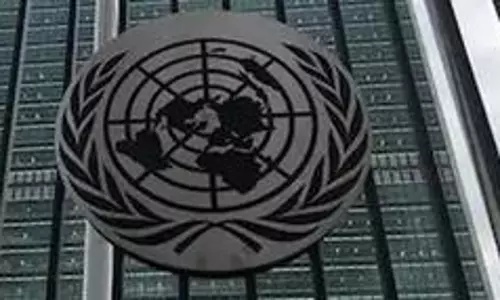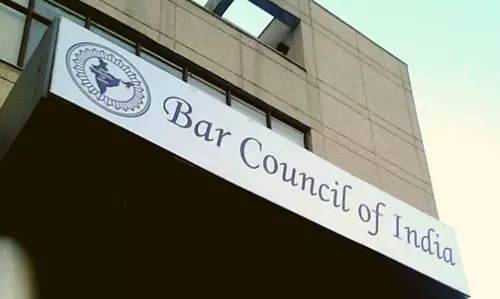
Top rich 10 per cent hold more than half of India's national income: Report
text_fieldsNew Delhi: The latest World Inequality Report (WIR) 2022 has inferred that India is a poor and unequal country with an affluent elite as the top 10 per cent population (based on wealth) holds 57 per cent of the total national income while the bottom 50 per cent share just 13 per cent income in 2021.
The WIR, authored by economist and co-director of the World Inequality Lab, Lucas Chancel, with economists Thomas Piketty, Emmanuel Saez and Gabriel Zucman, also states that global income has dropped during 2020.
Around half of the dip was attributed to rich countries and the rest in low-income and emerging countries- mostly South and Southeast Asia "more precisely" India. When India is removed from the analysis, the global bottom 50 per cent's income share appeared slightly increased in 2020, the report says.
In India, while the top 10 per cent hold 57 per cent of total national income, the top 1 per cent has 22 per cent. But the bottom 50 per cent's income share went down to 13 per cent of the total national income.
India's middle class is relatively poor, with an average income of only Rs 7,23,930 or 29.5 per cent of the total national income, while the top 10 per cent and 1 per cent hold 65 per cent (Rs 63,54,070) and 33 per cent (Rs 3,24,49,360), respectively.
In 2021, the average annual income of Indian adults was Rs 2,04,200, but the bottom 50 per cent earned Rs 53,610 against the top 10 per cent's Rs 11,66,520, which is more than twenty times the former's.
Average household wealth stands at Rs 9,83,010, and only 6 per cent (Rs 66,280) is the share of the lower 50 per cent. Finally, the share in pre-tax income of the top 10 per cent and bottom 50 per cent remained broadly constant since 2014, the report says.
The report asserts that the quality of inequality data released by the Indian government has seriously deteriorated, and consequently, it has become difficult to assess recent inequality trends. According to Niti Aayog's recent Multidimensional Poverty Index (MPI), one in every four people of the country was multidimensionally poor. While Bihar has the highest share of multidimensionally poor with 51.96 per cent of its population, Jharkhand 42.16 and Uttar Pradesh 37.79 follow.
Meanwhile, the inequality report infers that global inequality remains similar to the age of Western Imperialism in the early 20th century. The poorest half of the world holds 2 per cent of the total global wealth while the richest 10 per cent reigns 76 per cent.
The inequality is the highest in the Middle East and North Africa (MENA), with the top 10 per cent people (based on wealth) having 58 per cent of total income while Europe noted the lowest with the top 10 per cent owning 36 per cent. In East Asia, the top 10 per cent holds 43 per cent of total income, and in Latin America, it is 55 per cent.
Regarding women's share of global income from works, the report says that it was about 30 per cent in 1990 and is still less than 35 per cent.
The report further says that even though countries became richer over the last 40 years, their governments became significantly poor, mainly post the pandemic. Many of the government's share of wealth in rich countries is zero or even negative figures, which means the total wealth is in private hands.
So, the report suggests levying a modest wealth tax on multimillionaires and reinvesting it into education, health and ecological transition. In 2021, there were 62.2 million millionaires worldwide, and their average wealth was 2.8 million dollars, representing a total of 174 trillion dollars. If 1.2 per cent global tax is levied, it will generate 2.1 per cent of global income.
It also says that inequalities within countries are greater than between countries. The gap between the average income of the top ten per cent and the bottom 50 per cent (based on wealth) of the population almost doubled within countries. This means that despite flourishing in the economy, the world remains unequal. The deregulation and liberalisation policies of the 1980s only catered for the top 1 per cent of the world, widening the gulf between rich and poor, the report stated.
With PTI inputs


















